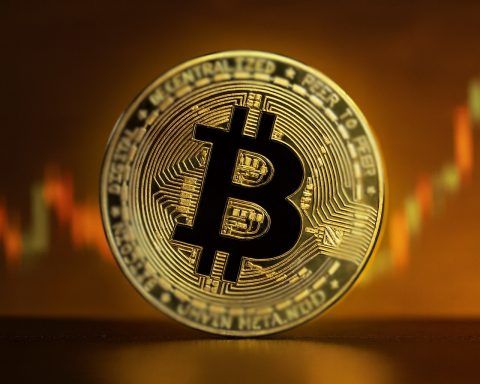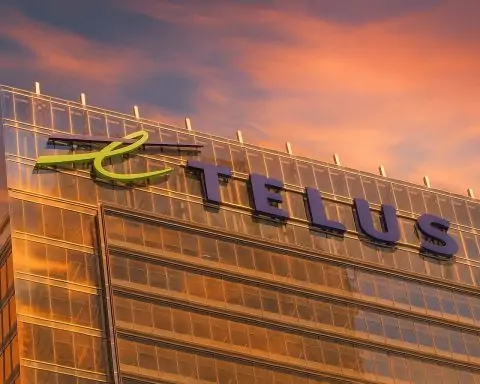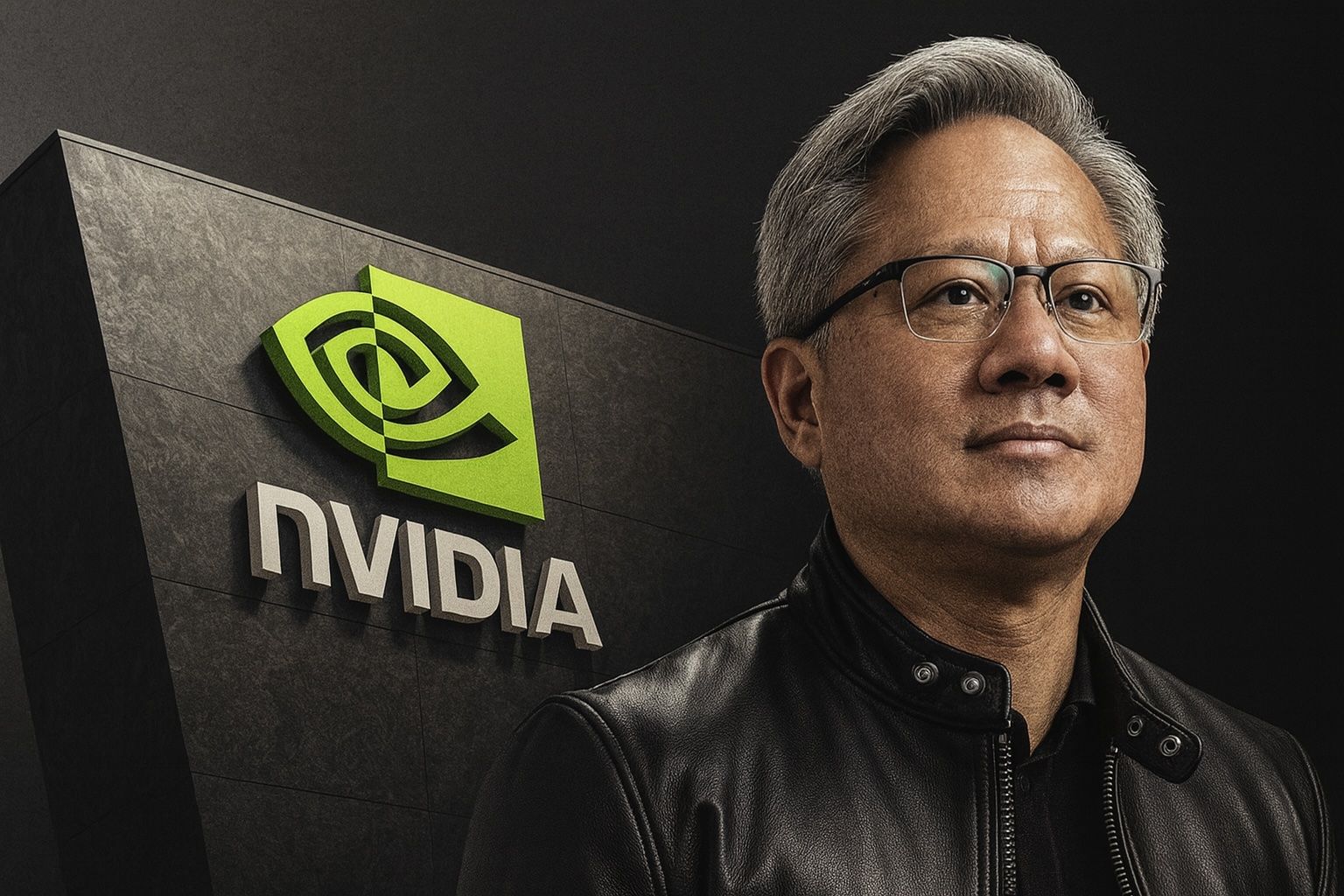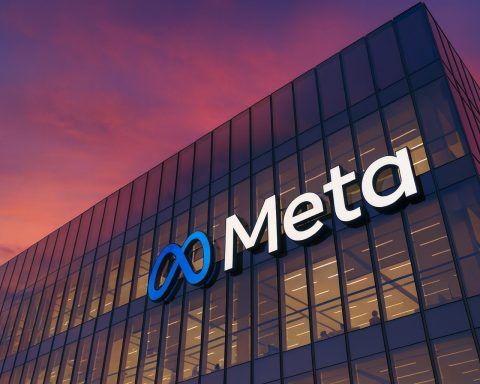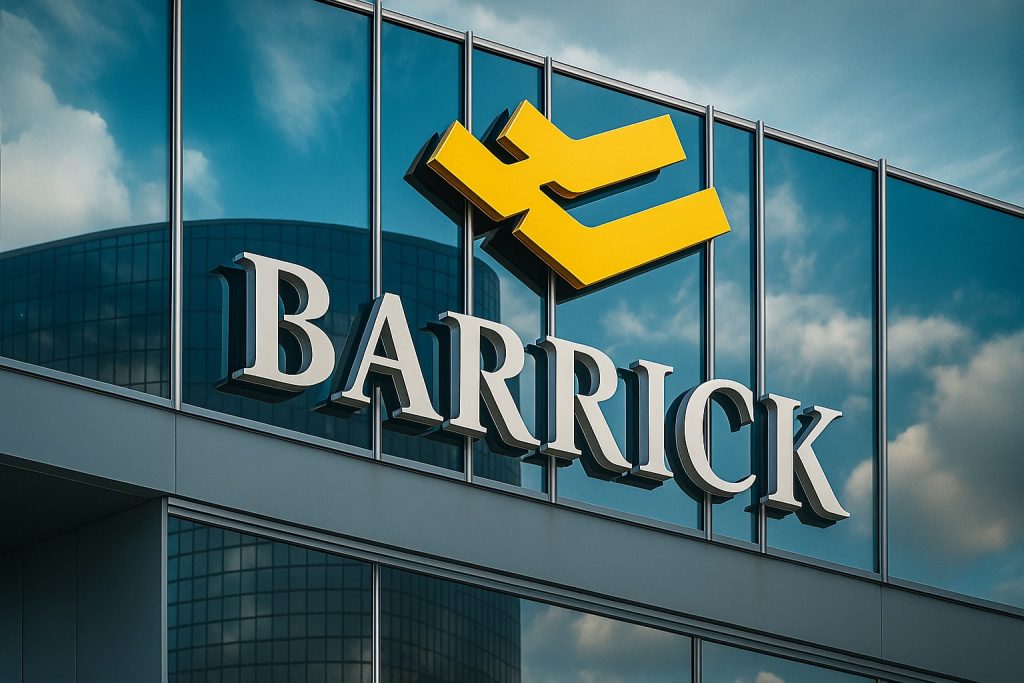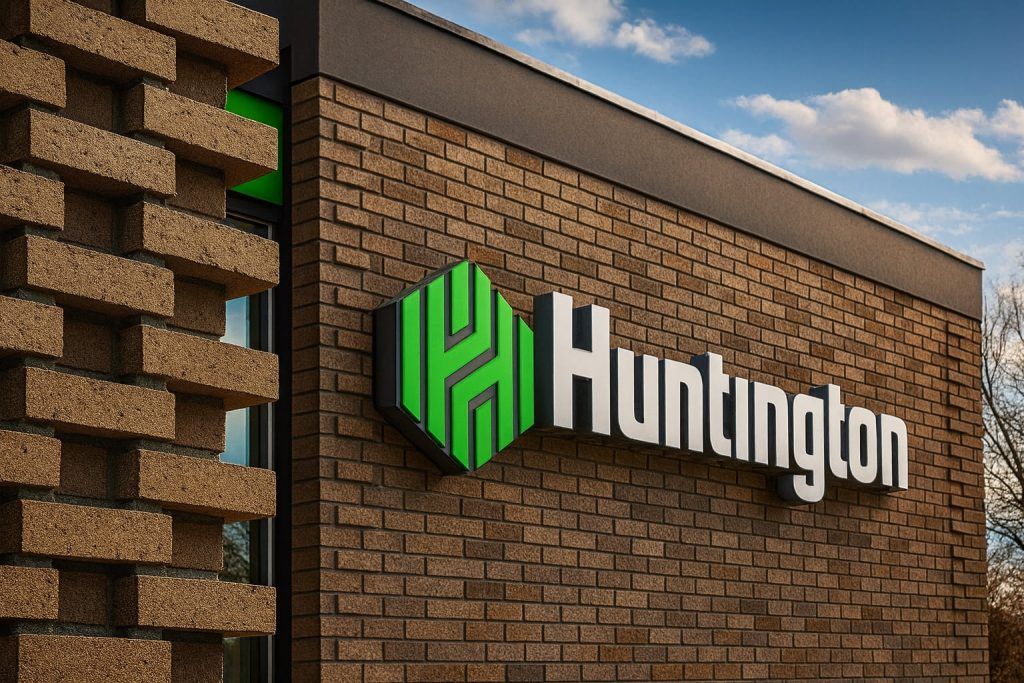Hewlett Packard Enterprise (NYSE:HPE) shares traded lower on Tuesday, November 18, 2025, as investors digested a fresh $1.8 billion legal claim linked to the Autonomy acquisition, a new $714 million stake sale in its Chinese joint venture H3C, and lingering concerns about hardware margins after a Morgan Stanley downgrade.
At around midday U.S. trading, HPE stock was changing hands close to $21 per share, down just under 1% on the session and roughly 8% over the past week, leaving the company with a market value just under $28 billion. The shares now sit about 20% below their 52‑week high near $26.5, though still more than 70% above their 12‑month low around $12. [1]
Broader market weakness is adding pressure: both the S&P 500 and Nasdaq 100 are down more than 1% today, with volatility spiking as investors fret about stretched valuations and an “AI bubble.” [2]
Below is a detailed look at what’s driving HPE stock today and what investors are watching next.
Quick Snapshot: HPE Stock on November 18, 2025
- Latest price: ~$21 per share
- Day move: Down roughly 0.8–0.9% versus Monday’s close around $21.23 [3]
- 1‑week move: About ‑8%, reflecting heavy selling after a recent downgrade [4]
- 52‑week range: Approx. $11.97 – $26.44 [5]
- Market cap: About $27–28 billion [6]
- Valuation: Around 9× forward earnings with a trailing price‑to‑sales multiple under 1x, and a dividend yield near 2.5% [7]
- Institutional ownership: Roughly 80–90% of the float held by institutions [8]
1. New $1.8 Billion Autonomy Claim Puts Legal Risks Back in Focus
The biggest headline for HPE today is legal, not technical.
A Reuters report from London confirms that Hewlett Packard Enterprise is seeking nearly $1.8 billion from the estate of the late Autonomy founder Mike Lynch over HP’s troubled 2011 acquisition of the British software company. [9]
Key points from the court update: [10]
- HPE’s lawyers told London’s High Court it is claiming about $1.79 billion, including interest and after earlier settlements.
- The claim stems from allegations that Lynch and Autonomy’s former CFO inflated the company’s value ahead of HP’s $11.1 billion takeover.
- HP wrote down Autonomy’s value by $8.8 billion within a year of the deal.
- Lynch’s estate is seeking permission to appeal a 2022 U.K. ruling that found him liable and is arguing that roughly $761 million in interest sought by HP is “excessive.”
- Court filings referenced concerns that the estate may be insolvent, underscoring uncertainty over how much HPE can ultimately recover.
While this litigation is years old, today’s hearing and fresh headlines revive a story many investors would like to forget. It doesn’t change HPE’s operations directly, but it does:
- Remind the market of ongoing legal costs and uncertainty.
- Raise questions over how much cash HPE will realistically collect, and on what timeline.
- Add another perceived “overhang” at a time when investors are already nervous about margins and the macro backdrop.
For a stock already under pressure, that additional layer of perceived risk can amplify selling, even if the underlying business has been improving.
2. Morgan Stanley Downgrade and Margin Fears Still Weigh on Hardware Names
HPE’s latest slide didn’t start today. It kicked into high gear yesterday after Morgan Stanley turned more cautious on hardware vendors that are big buyers of memory chips.
According to Finviz’s analyst history and related coverage, Morgan Stanley downgraded HPE from “Overweight” back to “Equal‑Weight” on November 17, reversing an upgrade it made in August. [11]
A companion report, syndicated via Yahoo Finance and Investing.com, flagged that Morgan Stanley: [12]
- Slashed ratings on Dell, HP Inc. and HPE, pointing to surging DRAM and NAND prices.
- Warned that rising memory costs could compress margins for server and PC makers, even in an AI boom.
Smartkarma notes that HPE’s stock price dropped about 7% in a single session to around $21.23, with very heavy volume near 50 million shares, after the downgrade and associated selling. [13]
A separate Trefis piece today highlights that HPE is down roughly 11% over the last five trading days, attributing the pullback to a “disappointing” fiscal 2026 outlook and margin concerns layered on top of the downgrade. [14]
In other words, Tuesday’s modest drop is happening on top of a sharp sell‑off that already took place, as investors re‑price:
- The near‑term profitability of AI‑driven server and networking demand.
- How much of HPE’s AI and hybrid cloud growth might be offset by component cost inflation.
3. Strategic China Move: HPE to Sell 10% of H3C for $714 Million
Alongside margin worries, investors are still digesting a significant strategic move in China that was formally disclosed yesterday but is being widely referenced in today’s commentary.
In a Form 8‑K filed with the SEC on November 17, HPE said its wholly owned subsidiary H3C Holdings had entered into five share purchase agreements to sell an aggregate 10% of H3C Technologies Co., Ltd. to a consortium of Chinese buyers for roughly $714 million in cash. [15]
Additional coverage from GuruFocus and other outlets notes that: [16]
- H3C is HPE’s Chinese joint venture and server/networking partner, and the sale implies a multi‑billion‑dollar valuation for the unit.
- The transaction continues HPE’s gradual monetization and exit strategy from H3C, following earlier stake sales.
- The company intends to dispose of its remaining 9% stake over time, via options or direct sales once regulatory approvals are secured. [17]
From the market’s perspective, this move has two faces:
Potential positives
- Unlocks $714 million in cash that can be used for debt reduction, buybacks, or further AI/HPC investments.
- Simplifies HPE’s China exposure at a time of rising geopolitical and regulatory risk.
- Signals discipline in capital allocation, consistent with HPE’s focus on higher‑margin, recurring revenue.
Potential concerns
- Reduces HPE’s participation in China’s long‑term growth, especially in local AI infrastructure.
- Reminds investors that HPE is still working through a complex exit from its JV, with regulatory and execution risk.
Smartkarma and other commentators frame the H3C sale plus the Morgan Stanley downgrade as a one‑two punch that has helped drive the recent slide in HPE’s share price, even as the company executes on its AI and networking strategy. [18]
4. Fresh Autonomy Headlines: How Big a Risk for HPE Stock?
Today’s Autonomy‑related court hearing is less about new allegations and more about money and timing. The 2022 U.K. judgment already found Lynch liable for civil fraud; the question now is what HPE can collect and when. [19]
For shareholders, key implications are:
- Ceiling vs. floor: While HPE is seeking $1.79–1.8 billion including interest, the High Court has previously indicated the damages figure is well below the original claims, and the estate’s ability to pay is unclear. [20]
- Optional upside: Any material recovery would effectively be a windfall, adding cash and offsetting part of the original Autonomy write‑down.
- Headline risk: Ongoing litigation keeps the Autonomy narrative in the news, which can weigh on sentiment even if it doesn’t change fundamentals day‑to‑day.
Law360 and MLex both report that Lynch’s estate is pushing to challenge the prior judgment and the level of interest, arguing that HP/HPE’s demand overstates its true losses. [21]
The bottom line: today’s legal headlines add noise and perceived risk, but they don’t change HPE’s operational trajectory. They matter mainly because they intersect with a week of negative stock momentum and macro jitters.
5. New AI Partnership: HPE and BizzTech Target Digital Twins and Smart Spaces
Not all of today’s HPE news is negative. On the product and partnership front, HPE is leaning further into AI and edge‑to‑cloud solutions.
In a press release today, Hewlett Packard Enterprise and BizzTech announced a strategic partnership to “advance edge‑to‑cloud AI for smart spaces and digital twins.” [22]
According to the release:
- The alliance combines HPE ProLiant servers at the edge with the HPE GreenLake platform and BizzTech’s Metaverse/digital twin environment.
- The goal is to enable real‑time, browser‑based 3D digital twins and AI‑driven automation for use cases like smart cities, industrial operations, and workforce training. [23]
From an investor standpoint, this partnership:
- Reinforces HPE’s positioning as a hybrid cloud and edge AI player, not just a legacy server vendor.
- Fits neatly alongside recent moves like the Quantum Scaling Alliance consortium to build a practical quantum supercomputer, announced last week. [24]
- Is unlikely to be a near‑term revenue needle‑mover on its own, but supports the long‑term growth narrativearound AI, networking and high‑performance computing (HPC).
On a day dominated by legal and macro headlines, this kind of partnership news can be overshadowed—but it’s relevant for longer‑term holders focused on where HPE’s growth will come from.
6. Institutional Flows: Public Pension and Other Funds Add to HPE
Another notable piece of today’s news: a large U.S. public pension fund has modestly increased its stake in HPE.
A new MarketBeat summary of SEC filings reports that the Commonwealth of Pennsylvania Public School Employees’ Retirement System boosted its position in HPE by 7.3% in the second quarter, to about 322,000 shares worth roughly $6.6 million. [25]
The same article highlights that several other institutional investors also added to HPE, while some trimmed holdings, leaving institutional ownership just over 80% of the stock. [26]
On the Wall Street sentiment front:
- Analysts collectively maintain a consensus “Hold” rating on HPE.
- The average price target sits around $25–26, implying mid‑teens upside from current levels, even after the recent downgrade. [27]
In short, big money is not fleeing the name wholesale. But the mix of “Hold” ratings and mid‑single‑digit downside risk to some targets after recent cuts suggests that the Street sees HPE as a balanced risk‑reward rather than a screaming bargain.
7. Fundamentals Check: Record Q3, AI Momentum and the Next Earnings Catalyst
Today’s price move sits against a backdrop of strong recent fundamental performance.
In its fiscal Q3 2025 results, reported September 3, HPE delivered: [28]
- Revenue of about $9.1 billion, up roughly 18–19% year‑on‑year, a record for the company.
- Server revenue up mid‑teens, and networking revenue up more than 50%, helped by the Juniper Networks acquisition.
- Hybrid cloud revenue growing in the low double digits.
- Annualized revenue run‑rate (ARR) of about $3.1 billion, up over 70% year‑on‑year, underscoring the shift toward more recurring, subscription‑like revenue.
- Non‑GAAP EPS of $0.44, modestly above consensus despite narrower margins.
Independent analysts at The Futurum Group called out Q3 as a “record revenue” quarter with solid momentum across servers, networking, and hybrid cloud, while acknowledging some pressure on margins as Juniper integration ramps and AI infrastructure demand grows. [29]
Looking ahead:
- HPE’s next major catalyst is its Q4 and full‑year fiscal 2025 earnings, scheduled for December 4, 2025 after market close, alongside a webcasted conference call. [30]
- Investors will be laser‑focused on:
- Updated fiscal 2026 guidance, especially around margins in HPC & AI and Intelligent Edge.
- Any commentary on the H3C stake sale, including use of proceeds.
- The status of Autonomy litigation and any potential financial impact.
Against this backdrop, valuation metrics from Finviz show HPE trading at: [31]
- About 0.8× trailing sales and a forward P/E under 9×,
- With revenue up roughly 14% year‑on‑year on a trailing basis,
- And a dividend yield in the mid‑2% range.
Those numbers underpin the argument that HPE is cheap relative to its growth rate, but they don’t eliminate concerns about execution, competitive intensity and margin resilience.
8. What Today’s HPE Stock Move Could Mean for Investors
For traders and longer‑term investors alike, today’s action in HPE can be read through two lenses.
Bearish narrative
- Margin pressure: Rising memory prices and hardware input costs may cap near‑term profitability, even if AI server demand stays strong. [32]
- Legal overhang: The renewed Autonomy claim headlines highlight an unpredictable legal process, with potential for more expenses and mixed outcomes. [33]
- China uncertainty: The H3C stake sale underscores HPE’s strategic retreat from China, raising questions about growth in a massive market. [34]
- Stock momentum: A double‑digit percentage drop over five sessions can attract short‑term technical selling and risk‑off flows, especially on a day when indices are also under pressure. [35]
Bullish narrative
- Valuation support: Around 9× forward earnings, under 1× sales and with a ~2.5% dividend, HPE trades at a discount to many AI‑adjacent peers despite double‑digit growth. [36]
- AI & HPC tailwinds: Q3 showed that servers, networking and hybrid cloud—especially with Juniper and new quantum/AI initiatives—are genuine growth engines, not just hype. [37]
- Balance sheet flexibility: The $714 million H3C monetization plus any future stake exits give HPE more dry powder for debt reduction, buybacks, or targeted M&A. [38]
- Institutional interest: Public pensions and asset managers are still adding or holding large positions, and the Street’s average target implies moderate upside. [39]
For now, the market appears to be balancing solid fundamentals and AI‑driven upside against near‑term margin risks and legal noise. That tug‑of‑war is exactly what’s showing up in today’s modest decline on top of an already steep weekly drop.
Key Things to Watch from Here
If you’re following HPE stock in the coming days, three focal points stand out:
- Earnings commentary on margins and memory costs
- Does management still expect margin improvement into fiscal 2026, or do component costs and competitive pricing force a rethink?
- Progress on H3C exit and capital deployment
- How quickly do regulators sign off on the 10% stake sale, and how does HPE deploy the $714 million in proceeds?
- Resolution path for Autonomy litigation
- Any indication of settlement, appeals timing, or expected recovery ranges could reduce uncertainty that’s currently weighing on sentiment. [40]
Disclaimer: This article is for informational and news purposes only and does not constitute investment advice, a recommendation, or an offer to buy or sell any security. Always do your own research or consult a licensed financial adviser before making investment decisions.
References
1. finviz.com, 2. www.tipranks.com, 3. finviz.com, 4. finviz.com, 5. finviz.com, 6. finviz.com, 7. finviz.com, 8. finviz.com, 9. www.reuters.com, 10. www.reuters.com, 11. finviz.com, 12. finance.yahoo.com, 13. www.smartkarma.com, 14. www.trefis.com, 15. www.sec.gov, 16. www.gurufocus.com, 17. www.sec.gov, 18. www.smartkarma.com, 19. www.reuters.com, 20. www.reuters.com, 21. www.law360.com, 22. www.einpresswire.com, 23. www.einpresswire.com, 24. www.investors.com, 25. www.marketbeat.com, 26. www.marketbeat.com, 27. www.marketbeat.com, 28. www.hpe.com, 29. futurumgroup.com, 30. finviz.com, 31. finviz.com, 32. finance.yahoo.com, 33. www.reuters.com, 34. www.sec.gov, 35. www.smartkarma.com, 36. finviz.com, 37. futurumgroup.com, 38. www.sec.gov, 39. www.marketbeat.com, 40. www.reuters.com


